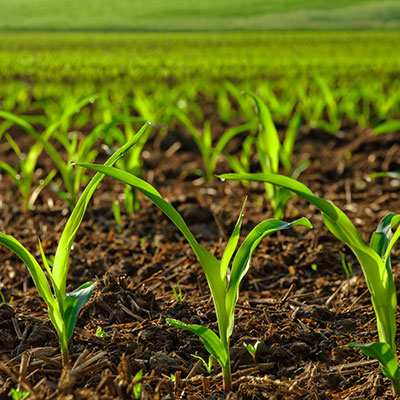Porto Alegre, May 10, 2022 – The US planting confirmed a significantly slower than normal start. The calculation of yield potentials according to planting and germination dates is always evaluated at this time to try to project a better or worse crop in the country. Naturally, sources that make this type of measurement have already started to project lower potential yields, which may not be confirmed at the time of full harvest. Normal movements in the midst of a crop that needs to be perfect. This week, on the 12th, we will have the USDA supply and demand report, where the highlight will be the first estimate for the 22/23 framework, which, without magical statistics, promises to be still bullish for corn prices.
The US planting brought 14% of the cultivated area last week, against 33% normal. A significant delay that can be used by the market to manage more conservative potential yield projections for this 2022 crop. In theory, later planting in the Midwest generates lower yield potential. In practice, we have already seen quite different situations. Regarding the 2021 crop, when 42% of the area had already been planted until the last week of April, there is a correlation. In 2021, US productivity was a record at 177 bushels/acre, even with drought problems in the center-north of the Midwest and Plains. Perhaps, early planting has contributed to this picture of good yields even with an adverse climate.
This is the first point for the next USDA report: productivity projection. Projecting 177 bushels/acre brings potential production to 368/370 million tons, a good crop despite the lower area, but insufficient to raise stocks for the next business year and settle prices. USDA may project a yield outside of the historical normal curve and never confirmed, i.e. 180/182 bushels/acre, achieving a little more production and equalizing the forecast for stocks to a not so bullish scenario. The doubt would be the projections for demand and exports. Without Ukraine with great sales and Brazil now with a not so high second crop, the US export projection is difficult to assess with a strong decline in 22/23. But USDA can of course cut the projection and then correct it later, which would allow the market to settle down.
The avian flu that is ravaging parts of the United States at this moment would have already caused a cut of 25 million head of chicken and turkey. Perhaps, a stronger impact on the turkey market, but little significant for the chicken market and even less for the corn market. Perhaps USDA can use the avian flu argument to correct downward the future feedstuff demand. For ethanol, that seems difficult while oil prices remain so high.
Therefore, we can say that the report on the 12th for corn supply and demand will only become bearish with strong use of statistics to neutralize a future vision of new cuts for the new crop. Other information such as a good forecast for the Chinese crop, production cuts in Ukraine, and Brazil without new growth forecasts for the second crop may counterbalance the information.
For now, the planting must progress well for the rest of the month, with good rains and a strong heat wave arriving in May in the US Midwest. For July and August, some models show below-normal rainfall in the region in the period when the corn and soybean crops are defined. Good crop progress in the United States would have very negative effects on international prices, even with more comfortable stocks. The appearance of some clearly problematic weather variable for July and August could provoke rapid and aggressive hikes.
Agência SAFRAS Latam
Copyright 2022 – Grupo CMA

